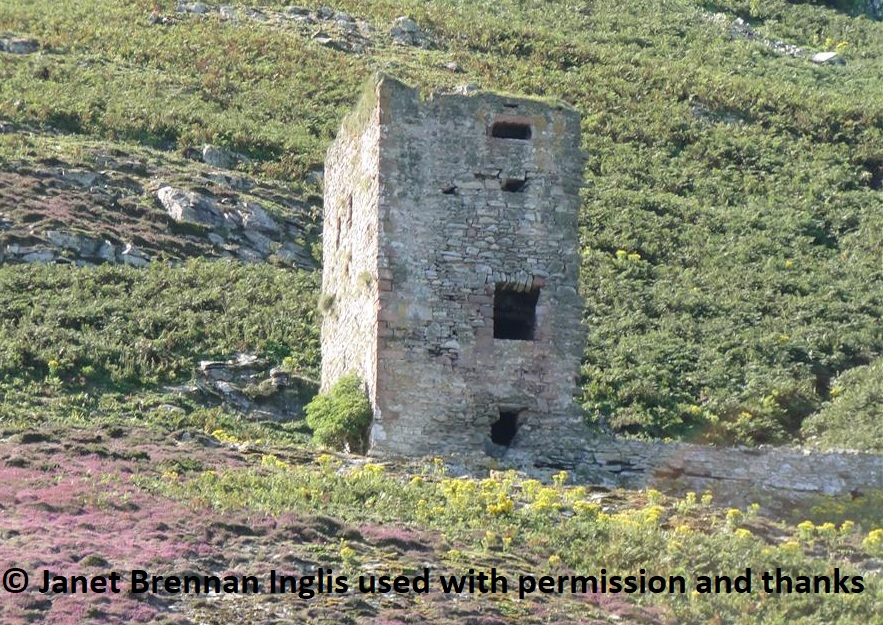Ailsa Castle

Ailsa Castle Details
Ailsa Castle, ruins of tower of the Hamiltons in ruins C16 and restored, used as a prison until C19
- Access: S.O.A.C. Public Access
- Grid Reference: NX022995
Ailsa Castle, also known as Ailsa Craig Castle, is a ruined tower house consistent in design and architecture with an early 16th century construction date. What remains is a modest rectangular tower and remnants of a walled courtyard to the north, which sits on the eastern (shore-facing) side of the island, which is a prominent landmark off the Ayrshire coast. The island was held by the Earls of Carrick until the 14th century when Robert Bruce became king of Scots, at which point it was absorbed into the estates of the Crown, but it was farmed out to Crossraguel Abbey from the 13th century, and in 1404 the abbey received the superiority of the island. In the mid 16th century, the island was returned to Gilbert Kennedy, a descendant of the earls of Carrick, and third earl of Cassillis. Members of the family were also Abbots of Crossraguel from 1520 to 1564, enabling them to “acquire” many of the abbey’s estates through nepotism.
It is feasible that the tower was founded before the grant to Cassillis, or at about this time. The vaulted basement room is lit by three slit windows, and the ground floor doorway opens into a small lobby, accessing not just the basement but a stairway running the width of the east gable and then turning to lead to the first floor hall, which was also vaulted, with a great fireplace in the west gable and a bread oven in the NW corner. This room was lit by two small south-facing windows, and a doorway at the northern end of the east wall led to a small vaulted room above the entrance lobby. This in turn led to a winding stair leading up to the second floor, and the accommodation chambers, and there is some evidence to suggest the second floor had corner turrets, although the attic level is completely lost. The tower is sited on a steep slope some 100 metres above the shore, and part of the foundation is a substantial block of masonry to provide a level ground floor area – the entrance therefore needed an external timber stair to reach it – and there was a vaulted store below the entrance lobby.
The island and tower were considered a refuge for Catholic rebels during the Reformation, and was attacked by both sides as a result. In 1580 it required considerable repairs, and the work was recorded by an armorial panel high up on the south gable, showing the arms of Thomas Hamilton, although it was instructed by Cassillis. Seven years later, the Catholic Lord Maxwell landed here whilst trying to escape his pursuers, and in 1597, the island and tower were captured by Hugh Barclay of Ladyland, and defiantly held for the King of Spain. The feat was discovered, and legend says that Barclay drowned himself in the sea rather than surrender. Presumably after 1603 the castle fell steadily into disuse, although the island was leased by the Kennedies for the purpose of gaining income from the seabirds (and presumably their guano). By the 18th century it was in ruins, although a small settlement had grown on the island.
Become a supporter of my work to access a more detailed history